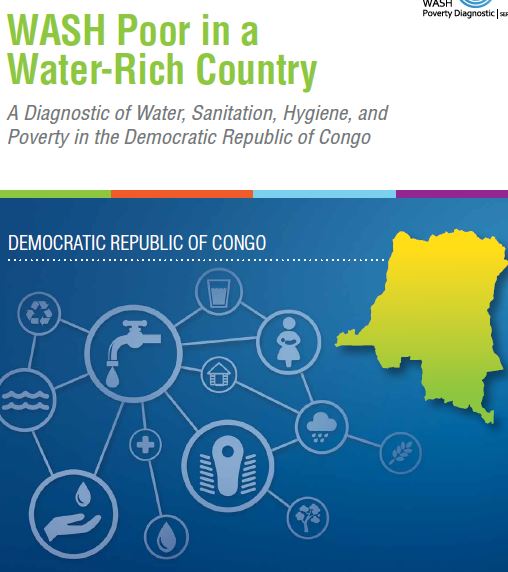WASH Poor in a Water-Rich Country A Diagnostic of Water, Sanitation, Hygiene, and Poverty in the Democratic Republic of Congo
The Water, Sanitation, and Hygiene Poverty Diagnostic (WPD) in the Democratic republic of Congo is part of a global initiative to improve evidence on the linkages between WASH and poverty. The diagnostic provides a detailed analysis of sector status, strengths, and weaknesses to inform the attainment of the new Sustainable Development Goals (SDGs) that aim for universal access to safely managed water and sanitation. The Democratic Republic of Congo has the third highest poverty rate in the world and concentrates the fifth largest number of poor people within its borders. The number of poor people in the Democratic Republic of Congo has increased by over 7 million since 2005, driven by the second highest fertility rate in Africa. Multidimensional poverty is high and human development indicators are among the lowest in the world. Access to improved WASH services is low in the Democratic Republic of Congo and has barely improved over the past decade. Improved water facilities are available to only 52 percent of the population and less than 29 percent have access to improved sanitation. The SDGs set ambitious new targets for WASH: universal access to truly safe facilities by 2030. In the new framework, the aim is to provide all Congolese people with water sources that are not only technically “improved” as the MDGs targeted, but on premises, continuously available, and free of contamination.
